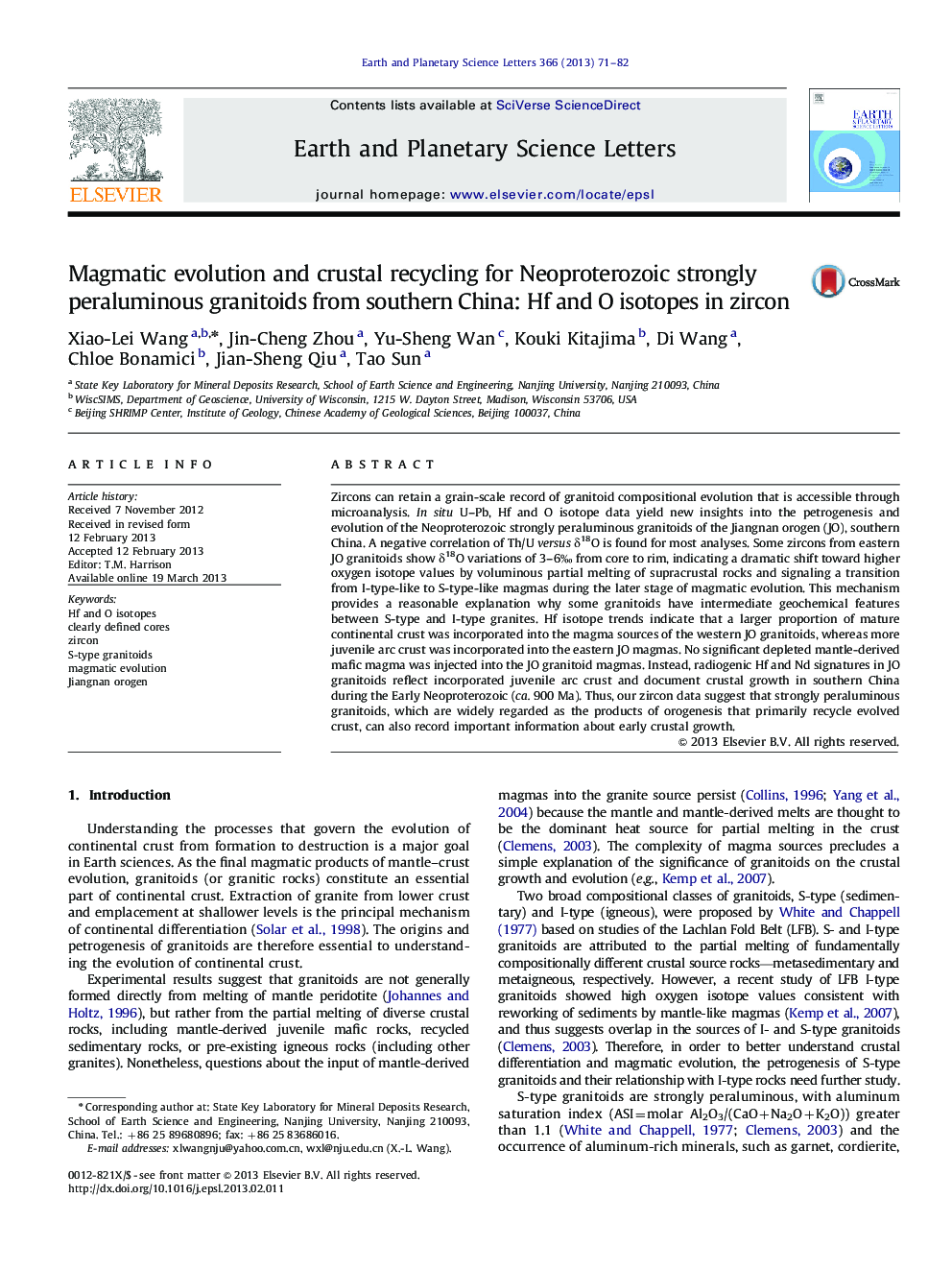| Article ID | Journal | Published Year | Pages | File Type |
|---|---|---|---|---|
| 6430359 | Earth and Planetary Science Letters | 2013 | 12 Pages |
Zircons can retain a grain-scale record of granitoid compositional evolution that is accessible through microanalysis. In situ U-Pb, Hf and O isotope data yield new insights into the petrogenesis and evolution of the Neoproterozoic strongly peraluminous granitoids of the Jiangnan orogen (JO), southern China. A negative correlation of Th/U versus δ18O is found for most analyses. Some zircons from eastern JO granitoids show δ18O variations of 3-6Ⱐfrom core to rim, indicating a dramatic shift toward higher oxygen isotope values by voluminous partial melting of supracrustal rocks and signaling a transition from I-type-like to S-type-like magmas during the later stage of magmatic evolution. This mechanism provides a reasonable explanation why some granitoids have intermediate geochemical features between S-type and I-type granites. Hf isotope trends indicate that a larger proportion of mature continental crust was incorporated into the magma sources of the western JO granitoids, whereas more juvenile arc crust was incorporated into the eastern JO magmas. No significant depleted mantle-derived mafic magma was injected into the JO granitoid magmas. Instead, radiogenic Hf and Nd signatures in JO granitoids reflect incorporated juvenile arc crust and document crustal growth in southern China during the Early Neoproterozoic (ca. 900 Ma). Thus, our zircon data suggest that strongly peraluminous granitoids, which are widely regarded as the products of orogenesis that primarily recycle evolved crust, can also record important information about early crustal growth.
⺠A negative correlation of Th/U versus δ18O resulted from AFC processes and late-magmatic fluids. ⺠Hf-O isotopes tend to be homogeneous at zircon rims for peraluminous granitoids. ⺠Zircons with clearly defined cores show large core-rim δ18O variations of 3-6â°. ⺠High-δ18O rims imply melting of supracrustal rocks and transition from I- to S-type-like magmas. ⺠Strongly peraluminous granitoids can also record important information about crustal growth.
